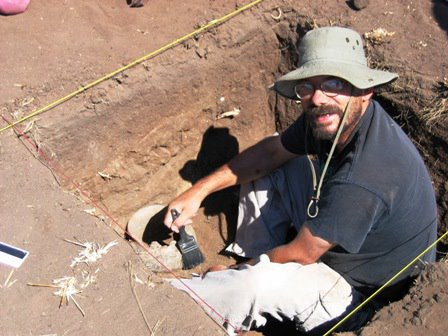The Girl Scout trip to the Eagle Lake Field Station a couple of weekends ago proved to be a lot of fun as well as highly educational. For me it was part revelation, part confirmation. It was revelation in the fact that several of the girls who I originally thought might be more interested in boys, church or other societal distractions turned out to be quite interested in science and the process of discovery, to my surprise and amazement. It was confirmation in the fact that I have always suspected exposing students to actual science and nature might bring to the surface some inherent interest in discovery being suppressed by the cultural context of their communities. In other words, the educational system (at all levels) in Lassen County has largely failed to expose students to actual science despite claims to the contrary; when these students are actually given an opportunity to ask questions and seek answers without their pastors looking over their shoulders, they get really excited about the opportunity and want to pursue it further. We talked about all aspects of the natural history of Eagle Lake basin flora and fauna, saw examples of all the major classes of animals in the region, talked about morphological and skeletal similarities and differences between animals (an introduction to taxonomy and common descent), collected and identified skeletal remains on in the area, went to the “bat cave”, went on a night drive and all other kinds of things. Of course, we had plenty of time for swimming and fishing!
The skeletal identification proved to be a challenge, but one the girls relished – we couldn’t leave until we figured out the species to which the bones belonged. The skull was particularly difficult (I have only a superficial knowledge of specific bird anatomy, but I learned a lot in this exercise). We finally found the skull fragment to be from a western grebe (Aechmophorous occidentalis) – a common bird on Eagle Lake, and one we should have looked at first! During the night drive we encountered cottontails (Sylvilagus nuttali), black-tailed jackrabbits (Lepus californicus), pinyon mice (Peromyscus trueii), and one striped skunk (Mephitis mephitis)! A couple of girls I wouldn’t have pegged as interested in fauna were the first out of the truck with the nets, trying to catch spotlighted animals. Our only success in this regard came down by the creek that night where several of the girls successfully netted bull frogs and tadpoles (Rana catesbeiana). During the day we encountered mule deer (Odocoileus hemionus) and gray foxes (Urocyon cinereoargenteus). The western pipistrelle bats (Pipistrellus hesperus) had largely abandoned their cave, except for one lone female who had several young clinging to her back. The girls really enjoyed looking at the mama and her babies through a red light (so as not to disturb her) – it was probably more exciting than seeing hundreds of the little animals hanging from the cave ceiling!
The entire experience encouraged me to discuss the possibilities of a “Lassen County Science Camp” up at the field station, and I discussed the matter with a review team from CSU that was up here this weekend exploring the possibility for other bringing other educational groups here to use the facility. I of course discussed the general lack of science exposure to students in rural northeastern California and the need for some alternative to a weakly developed Lassen County Science Fair and a high school biology field trip that was, until recently, largely run by evangelical Christians with limited science background. The problem of rural students entering the CSU or UC systems with little or no background in science is recognized and we discussed plans to pursue the project.
Subscribe to:
Post Comments (Atom)




3 comments:
[quote]The entire experience encouraged me to discuss the possibilities of a “Lassen County Science Camp” up at the field station, and I discussed the matter with a review team from CSU that was up here this weekend exploring the possibility for other bringing other educational groups here to use the facility [/quote]
That would be great! This area needs more hands on educational activites.
Hi..Its really interesting blog post found here..Thanks a lot for such a awesome blog post..
Thanks, great blog post
Post a Comment